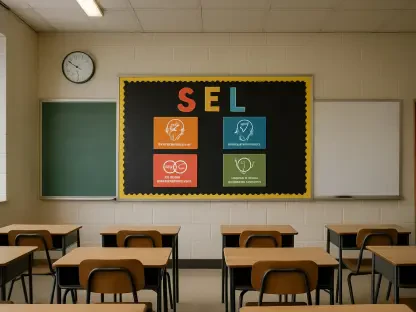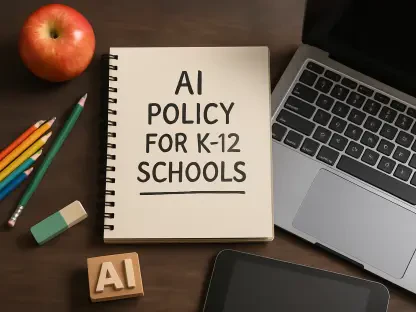Illinois is making headlines with its groundbreaking initiatives aimed at transforming the college admissions landscape, a move that holds the potential to redefine access to higher education for students across the state. Central to these efforts is a legislative measure that assures direct admission to most public universities and community colleges in Illinois for those meeting specific grade point average criteria. This initiative, set to be implemented in the 2027-2028 academic year, will encompass nine of the state’s 11 public universities. The underlying mission of this program is to simplify the college admission process, making it more accessible and affordable, and thus fostering educational opportunities for students from various backgrounds.
At the heart of this legislative push is a commitment to dismantling the long-standing barriers that often deter students from pursuing higher education. Financial constraints and procedural complexities have historically been significant obstacles for many students in accessing college education. The new legislation seeks to eliminate these bottlenecks, thereby paving the way for a more inclusive and equitable academic environment in Illinois. By focusing on the potential of students rather than narrow academic metrics, the state aims to cultivate a diverse student body that mirrors the rich diversity of Illinois itself, ensuring that no student is left behind due to systemic challenges.
Direct Admission and Its Impact
Direct admission based on grade point averages stands as a significant shift in college admissions policy in Illinois. This change reflects a broader understanding that standardized test scores should not be the sole determining factor of a student’s readiness for higher education. By providing automatic admissions based on GPA, Illinois is recognizing the holistic nature of academic achievement. This system will directly impact thousands of students, providing them with guaranteed entry to a public university or community college, thereby reducing uncertainty and anxiety traditionally associated with the college application process.
This policy also has implications for high school students and their academic planning. With clear criteria for admission, students are empowered to focus on maintaining a strong GPA, knowing that it holds tangible benefits for their college education. This shift encourages academic consistency and effort throughout high school, fostering an environment where students are motivated to excel in their studies. Moreover, direct admission policies are anticipated to inspire more rigorous academic programs at high schools, as students strive to meet the entry requirements for higher education institutions.
Economically, these initiatives promise to reduce the financial burden on students and families. By streamlining admission processes and basing them on GPA, students could potentially avoid the costs associated with standardized test preparation. Further, guaranteed admission to state institutions may make it easier for students to select schools based on their academic and professional interests rather than financial necessity. This democratization of the admission process underscores Illinois’s commitment to making higher education accessible to all.
Expanding Dual Credit Programs
The expansion of dual credit programs plays a crucial role in Illinois’s strategy to transform the educational landscape. By aligning high school curricula with standards set by the Illinois Community College Board, these programs enable students to earn college credits while completing their high school education. This forward-thinking initiative not only eases the transition to higher education but also helps to mitigate the financial impact of college tuition costs, as students can complete a portion of their college coursework before even stepping onto a university campus.
Dual credit programs are especially beneficial in preparing students for the demands of postsecondary education. They offer students the opportunity to experience college-level coursework and earn credits that are transferable to postsecondary institutions within Illinois. This not only provides a head start in their college education but also develops critical study skills and time management strategies that are essential for academic success. The integration of these programs into high schools is an acknowledgment of the need for more proactive educational strategies that prepare students for the challenges of college studies.
Additionally, dual credit programs foster closer collaboration between high schools and higher education institutions, facilitating a more seamless academic transition for students. This partnership ensures that the curriculum remains relevant and aligned with the expectations of colleges and universities, equipping students with the knowledge and skills they need to excel in their chosen fields. By investing in dual credit programs, Illinois is ensuring that students are better prepared for the next steps in their academic journeys.
Financial Aid Accessibility
Illinois is making waves with new initiatives designed to reshape college admissions, aiming to revolutionize higher education access in the state. A key component is legislation promising automatic admission to most public universities and community colleges in Illinois for students meeting set GPA standards. This change, slated for the 2027-2028 academic year, will include nine out of 11 public universities in Illinois. The goal is to streamline the admissions process, enhancing accessibility and affordability while promoting educational opportunities for students from diverse backgrounds.
This legislative initiative focuses on removing longstanding obstacles that discourage students from higher education pursuits. Historically, financial barriers and complicated procedures have hindered college access for many. The new law intends to erase these hurdles, fostering a more inclusive and equitable academic atmosphere. By prioritizing student potential over limited academic metrics, Illinois seeks to cultivate a student body reflecting the state’s rich diversity, ensuring systemic challenges don’t leave any student behind.









